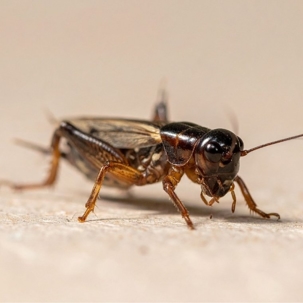Cricket Sounds
We all know the relaxing sounds of crickets chirping on a nice summer night. What most of us don’t know, though, is why they are singing these songs of summer.
It just so happens that there is more than one reason behind the sounds that these insects create. Crickets are named for the high-pitched sounds male specimens produce to attract females. Different species of cricket produce distinctive and identifiable sounds.
What Do Cricket Sounds Mean?
Cricket sounds are actually a form of communication, and their meanings can vary depending on the type of cricket and the context:
- Chirping for Mating: Most commonly, male crickets chirp to attract females. The sound is produced by rubbing their wings together, a process called stridulation.
- Territorial or Aggressive Chirping: Some crickets chirp to warn other males to stay away from their territory. These calls are usually shorter, sharper, or more aggressive-sounding than mating calls.
- Distress or Alarm: Crickets can also make sounds when threatened by predators. These distress calls are often erratic and less rhythmic, serving to startle predators or signal danger to other crickets.
- Daily Activity: Crickets are generally nocturnal, and chirping tends to increase at night, signaling the start of mating activity. In some species, daytime chirping may occur if the environment is warm or if they feel threatened.
How Do Crickets Make Their Sounds?
Interestingly enough, only male crickets can make these chirping sounds. Different cricket species produce different types of sounds. Camel crickets do not produce songs. The house cricket is known for producing a loud, continuous chirp at night, while the chirp of the field cricket is less high-pitched but occurs both day and night.
This chirp is created when male crickets by rubbing their leathery, ribbed front wings together, and is amplified by the surface of the wings. They can do this by either rubbing their long hind legs on their wings or simply by rubbing their wings together. In addition, warmer temperatures typically allow for faster movement and therefore more chirping. Did you know that you count the number of cricket chirps and use that number to calculate the temperature? It’s true! Read on, and we'll explain how to use the “cricket thermometer” method. Next time there’s a warm evening, count the cricket chirps!
Cricket Sounds Work As A Thermometer
Crickets are cold-blooded and take on the temperature of their surroundings. Back in 1897, a scientist named Amos Dolbear published an article “The Cricket as a Thermometer” that noted the correlation between the ambient temperature and the rate at which crickets chirp.
The insects’ muscles contract to produce chirping, based on chemical reactions. The warmer the temperature, the easier the cricket’s muscles activate, so the chirps increase. The cooler the temperature, the slower the reaction rate, and the less frequent the chirps. A cricket’s chirping can be used to approximate the temperature in Fahrenheit. Count the number of chirps in 15 seconds and add 40. The number is not exact and does vary somewhat depending on species.

